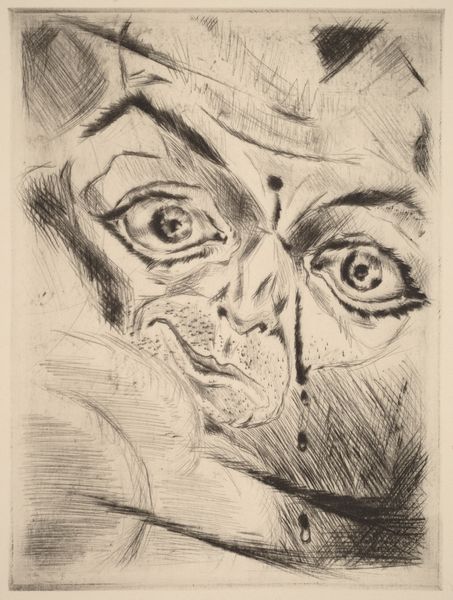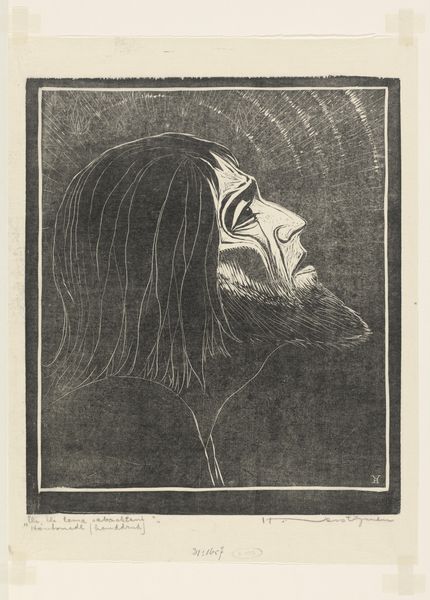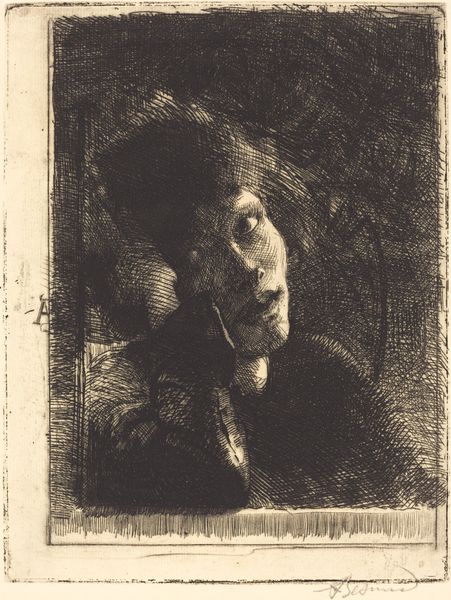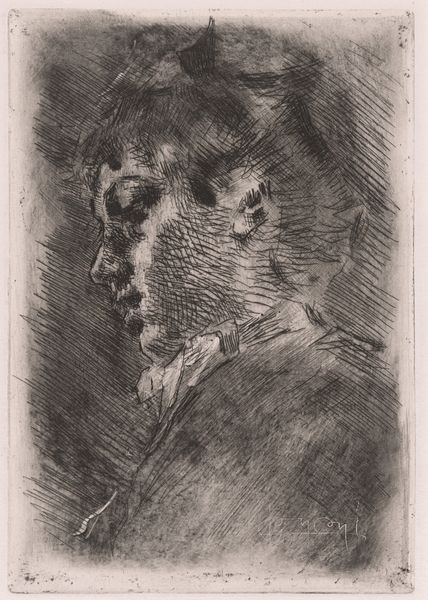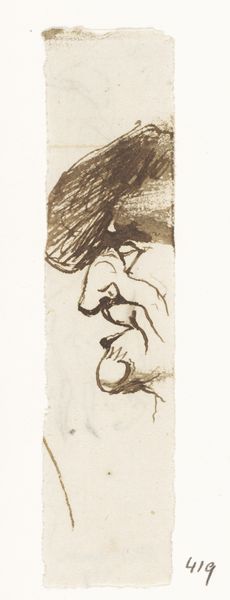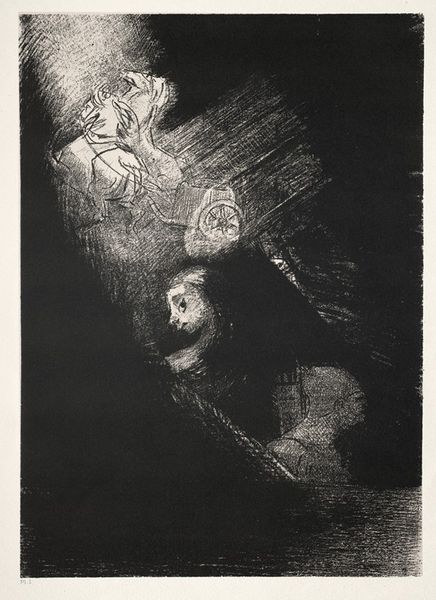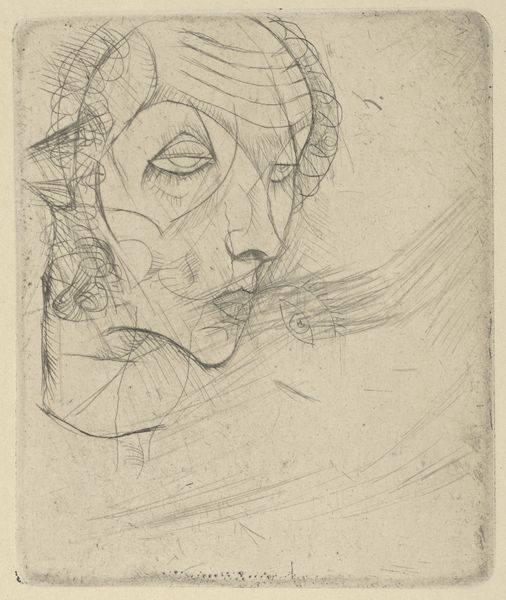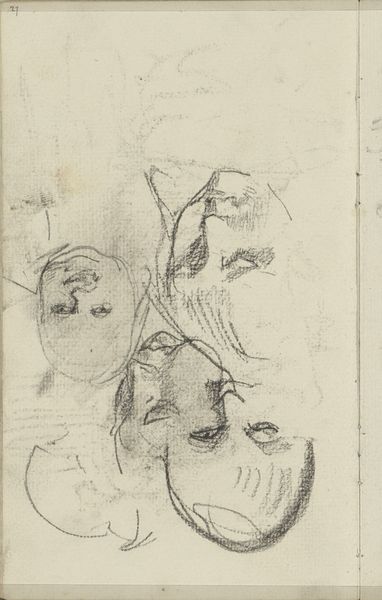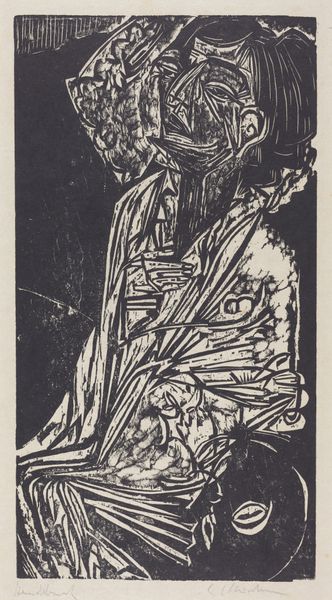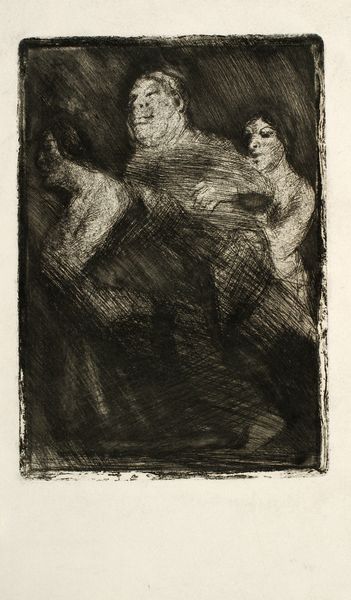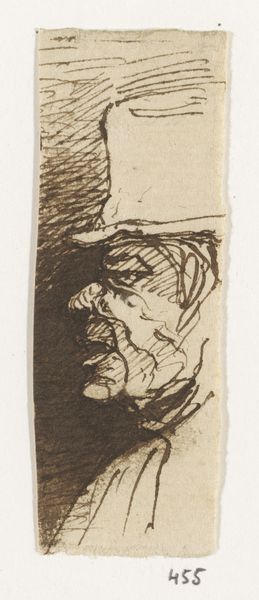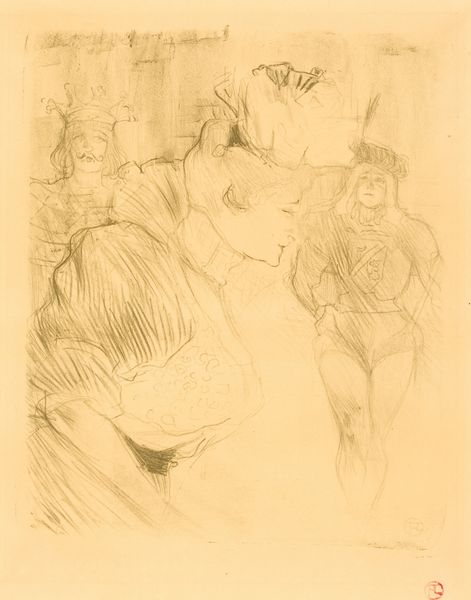
drawing, print, dry-media, graphite
#
drawing
# print
#
german-expressionism
#
figuration
#
dry-media
#
pencil drawing
#
graphite
#
portrait drawing
Copyright: Public domain
Editor: Here we have Walter Gramatté’s “Head in Profile” from 1923, rendered in graphite. It's a stark image. The hatching gives it a haunted, almost ghostly feel. How do you interpret this work in relation to its time? Curator: Considering the socio-political turmoil of post-World War I Germany, this print speaks volumes. Expressionism, as a movement, often served as a vessel for anxieties and disillusionment. How does the subject’s averted gaze contribute to this atmosphere, do you think? Editor: It definitely adds to the sense of unease, as if the subject is trying to avoid something. The little, ghostlike nude figure in the background also makes me wonder if that is about some inner fear. Curator: Precisely. The ghostly figure in the background introduces a fascinating layer. Could it symbolize vulnerability, the raw human condition laid bare against the backdrop of societal upheaval? Consider the German museums actively collecting Expressionist art at the time; they were implicitly acknowledging and perhaps even legitimizing these raw expressions of the national psyche. Editor: That's a powerful point. It almost feels like this was Gramatté's way of responding to a call. His psychological study is a powerful reflection of his nation’s psyche at this time, maybe even Gramatte’s way of solidifying his cultural place within the current climate. Curator: The dry media contributes a unique textural quality, further emphasizing the raw, unfiltered emotion prevalent in Expressionist works of the period. And do not miss how his face seems "erased" due to the scratching of the media used; almost a deconstruction of what defines Gramatté. Editor: Thanks. Looking at the piece through the lens of its historical context really adds a new dimension. Curator: Absolutely, thinking of it from a political, museum, and personal perspective changes how we engage with it. The image isn’t just an image, but also the story of that era and the anxieties felt by those present.
Comments
No comments
Be the first to comment and join the conversation on the ultimate creative platform.
